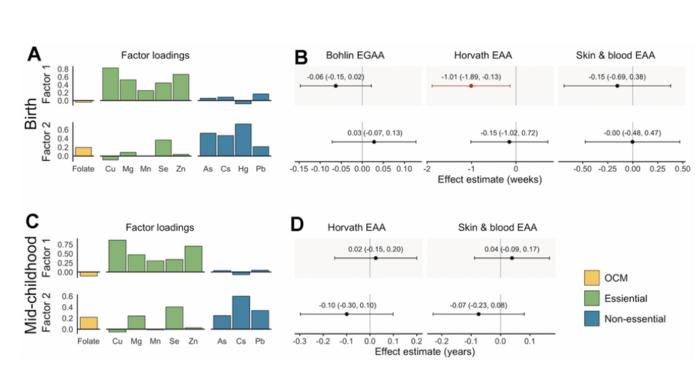Three G7 central banks meet in the coming days, and they dominate the macro stage. The Federal Reserve's meeting concludes on Wednesday, the Bank of England on Thursday, and the Bank of Japan on Friday.
The market recognizes a strong consensus has emerged at the FOMC for 50 bp hikes in June, but the unexpectedly strong CPI report before the weekend saw the market price in about a 50% chance of a 75 bp hike in July. Some Fed officials have been understandably reluctant to venture much of an opinion about the September meeting. After the CPI print, the market expects 50 bp move in September and November.
The Fed governor and regional president that are seen as the most hawkish are Governor Waller and St. Louis Fed President Bullard. Their hawkishness needs to be understood within the context of the market. Their "beef", as it were, is not with the market, who they say their views are aligned with, but with their colleagues. In March, the median dot was for the Fed funds range to be 1.75%-2.0% at the end of the year. The Fed funds futures market is closer to 3.15%. In March, there was only one forecast around the current market expectation. The median dot for the end of 2023 was 2.75%. The market is now at 3.50%.
We suspect the two new governors' dots will be consistent with the Fed's leadership. The median forecast for this year's GDP may be reduced from 2.8% to closer to 2.5%. If the median forecast for the PCE deflator (4.3% 2022 and 2.7% 2023) is raised, it would add to a hawkish message. The median forecast was for the unemployment rate to remain at 3.5%, in the face of the tightening and be at 3.6% at the end of 2024. Some of the Fed's critics poked at this and it will be interesting to see if it changes. The University of Michigan's consumer has tanked to levels not seen during past recessions, the tech bubble, the Great Financial Crisis, or the start of the pandemic. Some economists are claiming that the US is already in a recession. The Fed cannot be happy with the new increase in consumer inflation expectations the survey picked up.
In May, the FOMC statement acknowledged the contraction in Q1 GDP but noted that household spending and business investment (final sales to domestic purchasers) remained strong. This still seems to be a fair characterization of the economy. It said jobs gains were robust. Nonfarm payrolls rose by an average of 539k in Q1 22 and have averaged 413k in the first two months of Q2. Will the Fed recognize the moderation, or is it too early considering that in April and May 2021, the job growth averaged 355k a month? Besides technical adjustments, most of the rest of the statement is likely to be little changed. This includes the likelihood that despite variance of views, there is an agreement about the 50 bp rate hike and no dissents are likely.
When the Fed's rhetoric began changing last September, the December 22 Fed funds futures were implying a 0.35% 2022 year-end rate. It finished last year slightly above 0.80%. On the eve of the Fed's hike on March 16, the Dec contract implied about a 1.95% year-end rate. By the eve of the May 4 hike, the implied yield was closer to 2.75%. It finished last week a little above 3%. The swaps market has a terminal rate of about 3.75%.
The Bank of England is expected to hike its base rate by 25 bp on June 16 to 1.25%. It would be the fifth hike in the cycle that began last December with a 15 bp move. The swaps market is pricing in about a one in three chance of a 50 bp increase. There are five meetings left this year and the market has 180 bp of tightening discounted. This seems particularly aggressive given that it is consistent with two 50 bp hikes and three quarter-point moves.
The tightening of US monetary policy beginning in the late 1970s when Paul Volcker become the Federal Reserve Chair is the stuff legends are made off. Using the cover of money supply growth, Volcker led the Fed into hiking rates even as unemployment was climbing. Volcker, appointed by Carter, a Democrat, helped facilitate the Reagan-era capital offensive that liberated capital mobility, spurred financial innovation, but also generated a dramatic divergence of wealth and income that some argue is a bigger threat to the US economy (and political life) than inflation. Although, there was a hope in some quarters that Powell would take up the mantle, it seems BOE governor is channeling Volcker.
The Fed has begun an aggressive tightening course, but it sees the economy as strong and plays down recession worries. US unemployment is around half the pace it was when the Fed under Volcker began hiking. As we noted, it claims that it can raise interest rates sharply and shrink the balance sheet twice as fast as it did previously with no meaningful deterioration of the labor market. The Bank of England is a different kettle of fish. In May it warned that the economy is likely to contract next year and expand by a miniscule 0.3% in 2024. It envisions unemployment rising from 3.5% this year to 4.3% next and 5.0% in 2024. The three-month year-over-year rate calculated by the ILO stood at 3.7% in March. The April estimate is due June 14.
UK CPI was 9% above year ago levels in April. Last month, the BOE estimated that 80% of the overshoot in inflation is a function of the surge in energy prices and tradeable goods. Gas and electricity regulated prices jumped by nearly 55% in April and are expected to rise a little more than 40% in October. Consider that gasoline costs about GBP2 per liter, which converts to more than $11 a gallon. Between higher energy and food prices, and tax increases, the UK is experiencing a once-in-a-generation cost-of-living squeeze.
Just like Volcker-led hikes helped shape the American political discourse, BOE Governor Bailey's hikes could also impact the UK's politics. Prime Minister Johnson survived a vote of confidence over the objection of 41% of the Tory members of Parliament. Ultimately, Johnson's value to the party is that he led them into victory and regained the Conservative majority. However, this claim to fame has weakened. The Tories look set to lose two special elections on June 23 that were forced as the Tory MPs were forced to resign in separate sex scandals. Although, they do not reflect on Johnson, his government has been lambasted for the "sleaze factor."
The latest YouGov poll gives Labour an eight-percentage point advantage (39%-31%). A full third of those survey said that Labour leader Starmer, who also, incidentally, faces his own possible "partygate" would be a better prime minister than Johnson. A quarter favored Johnson. After the special elections, the next big hurdle for Johnson will be the Conservative Party Conference in October.
The Federal Reserve has all but committed to a 50 bp rate hike next week. The Bank of England will likely move by 25 bp. The Bank of Japan, the third G5 central bank that meets in the week ahead, will stand pat. BOJ Governor Kuroda has been explicit. The rise in the CPI, with the core (excluding fresh food) poking above the 2% target, is being driven by factors that are not sustainable, like the base effect from last year's cut in the cell phone charges, and higher energy prices. Excluding fresh food and energy, prices rose 0.8% from a year ago in April. It has not been above 1% for six years. The market appears to agree with Kuroda as the 10-year breakeven (the difference between the conventional 10-year yield and the inflation-linked security) is below 90 bp.
Kuroda, whose term expires in April 2023, has renewed the BOJ's commitment to the capping the 10-year yield at 0.25%. This comes, of course, not just in the face of the rising inflation, but also while major bond yields in the US and Europe have risen sharply. As a result of the divergence of monetary policy the yen has weakened sharply.
The correlation of the change in dollar-yen exchange rate and the US 10-year yield is a little above 0.5 over the last 60 sessions and a little below in the past 30. The euro is trading at eight-year highs against the Japanese yen. The change in the cross rate and the 10-year German Bund yield is stable around 0.60 for the past 30 and 60 days.
Even if the divergence of interest rates is the key driver pushing the yen lower, there are also other considerations. For example, Japan is also experiencing a negative terms of trade shock. Consider that Japan had a current account surplus of JPY3.5 trillion in the first four months of this year, slightly more than half the surplus in the same period last year. Lenin once quipped that in battle, feel mush push; feel steel retreat, which also seems to apply to foreign exchange. That the yen's decline in being driven by economic fundamentals, and that Kuroda has no intention to alter the monetary course, and, if anything, still sees net advantages of a weak currency, the risk of intervention (steel) is low.
Although some observers have talked about the risk of intervention, it mostly seen at higher dollar levels. Some reports cite interest one-year JPY150 calls. Japanese officials' verbal intervention stepped up at the end of last week, but the concern is still over the pace of the move and not levels. Moreover, the impact of the verbal intervention was quickly blunted by the stronger than expected rise in the US CPI.
It seems that trades fall into three categories. The first is momentum or trend following. The second is mean reversion or going against the trend. The third is carry trade, which is a version of interest rate arbitrage. Sell a low yielding currency and buy a higher yielding currency. The profit or loss is derived from the different yields rather than spot movement. The short yen position now is a momentum or trend following trade and it can also be part of a carry trade.
The challenge with carry trades is that a volatility of the currencies can overwhelm the interest rate differential. For example, imagine you can borrow yen for around six basis points annualized convert into dollars for a three-month time deposit and earn around 170 bp (annualized). With the three-month volatility of the dollar-yen exchange rate implied in the options market of over 11%, one can appreciate how movement in the spot market easily negate the yield pick-up. It is why some have characterized the carry trading in the foreign exchange market as picking up pennies in front of steam roller.
If the rise in US 10-year yields is the key to understanding the depreciation of the yen against the dollar, to ask when the greenback peaks is to ask when US rates peak. That in turn depends to a great extent on the terminal rate for Fed funds. If the target rate peaks at 3.50%-3.75% as many think now and is priced into the swaps market, then arguably the 10-year yield has "value" as it approaches 3.20%.
The momentum indicators for dollar-yen corrected lower last month but have risen sharply over the past couple of weeks. The MACD is still accelerating higher but the Slow Stochastic is over-extended and can turn lower with a setback in spot. The dollar closed above its upper Bollinger Band (two standard deviations above the 20-day moving average) every session last week. Speculators in the futures market already have a substantial short yen position (short about 94.5k contracts, JPY12.5 mln per contract, or roughly $93k per contract, or about $8.8 bln overall). They have not been net long since March 2021. Market sentiment, with the talk of JPY150 calls, seems extreme.
The surge in US and German rates warns that the BOJ efforts to cap the 10-year bond yield at 0.25% will be challenged again in the coming days. It has been successful so far and it has not cost it much money. Defending the cap is has been negative for the yen as it drives home the point that monetary policy has not changed and is the heart of divergence that is driving the exchange rate.
Disclaimer
recession
unemployment
pandemic
monetary policy
fomc
fed
federal reserve
currencies
euro
governor
recession
gdp
interest rates
unemployment
japan
europe
uk
Read More




















































